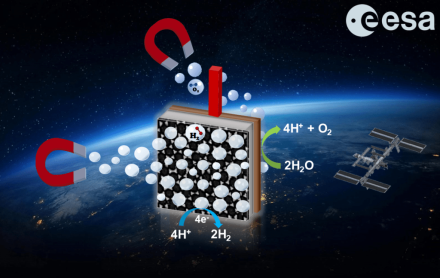ESA SciSpace SolarMag Project
Photoelectrochemical devices integrate the processes of light absorption, charge separation, and catalysis for chemical synthesis. The monolithic design and sustainable operation are interesting for space applications, where weight and volume constraints predominate. However, hindered gas bubble desorption in reduced gravitation limits the application in space.

Photoelectrochemical devices integrate the processes of light absorption, charge separation, and catalysis for chemical synthesis. The monolithic design and sustainable operation are interesting for space applications, where weight and volume constraints predominate. However, hindered gas bubble desorption in reduced gravitation limits the application in space.
In this ESA-sponsored sounding rocket experiment, Prof. Katharina Brinkert’s group at the University of Warwick and the LGST Lab will provide a proof-of-concept microgravity test of an autonomously operating, efficient and monolithic solar water-splitting device for oxygen and hydrogen production which could complement currently existing life support technologies. In order to achieve efficient and stable gas production, we will investigate two key mechanisms to successfully detach hydrogen and oxygen gas bubbles from the electrode surface and direct them through the electrolyte solution to a gas collection point: i) magnetically-induced buoyancy, and (ii) hydrophilic electrocatalyst structures. The longer microgravity time provided by the sounding rocket experiment will be crucial to successfully demonstrate the effect of both mechanisms.
Our results will not only be key for demonstrating the possibility of utilizing photoelectrochemical devices in space which could be extended e.g., to carbon dioxide removal and chemical synthesis – they will also be instrumental in optimizing electrolyzer systems, phase separators, and boiling processes in reduced gravitation.
